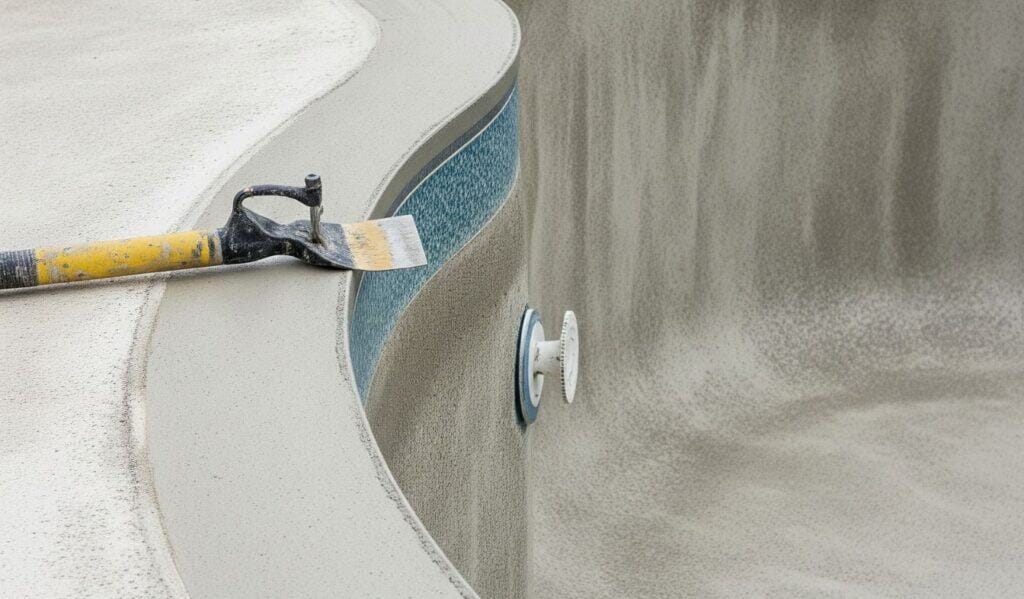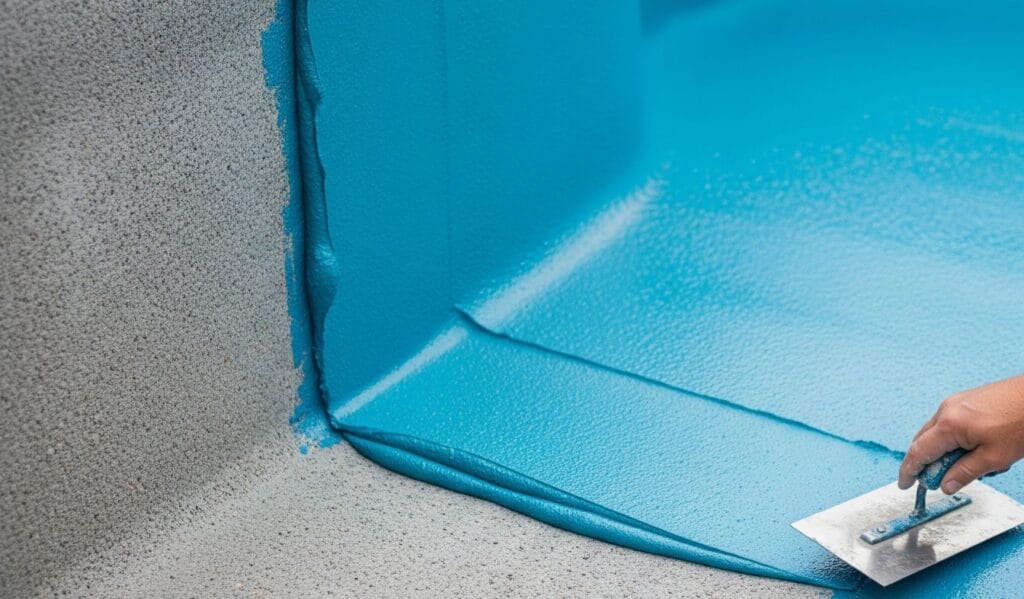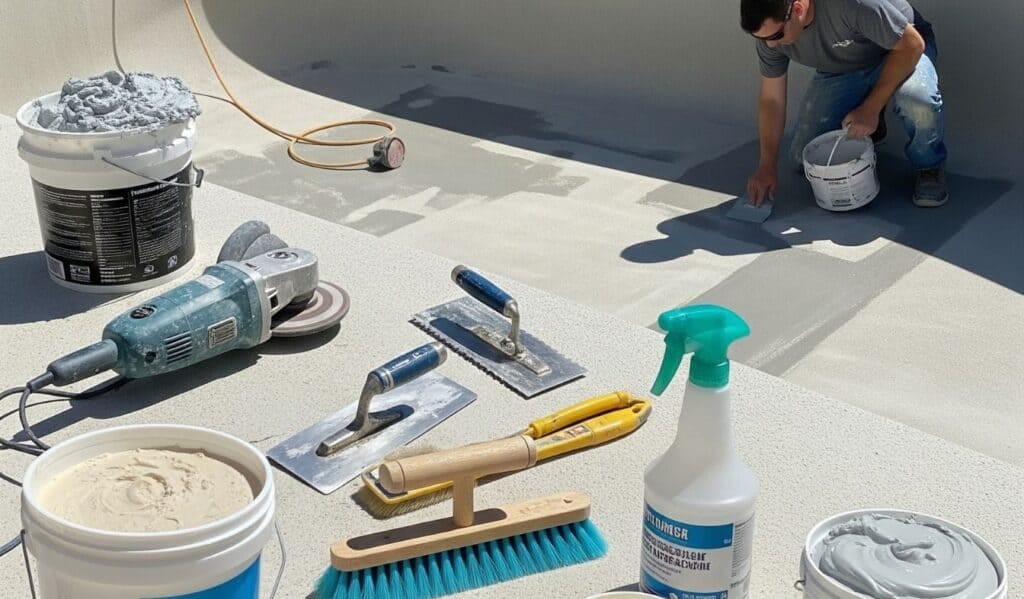At All County Pools & Spa, we understand that your swimming pool isn’t just a luxury, it’s a reflection of your lifestyle and an investment in your property. Over time, even the most well-maintained pools begin to show signs of aging. If you’ve noticed cracks, stains, or rough textures on your concrete pool, it’s time to talk about concrete pool resurfacing.
In this comprehensive guide, we’ll walk you through what concrete pool resurfacing is, why it’s so important, the benefits you can expect, and how we at All County Pools & Spa can help restore your pool to its former glory or even better.
Key Takeaways:
- Concrete pool resurfacing revitalizes your pool’s appearance and structural integrity.
- It can address cracks, stains, and wear that accumulate over time.
- Resurfacing adds longevity and increases your property value.
- Professional resurfacing ensures safety, aesthetics, and long-term durability.
- All County Pools & Spa offers expert resurfacing tailored to your needs. Call us today at 818-720-3316.
What is Concrete Pool Resurfacing?

Concrete pool resurfacing is the process of applying a new surface layer to the interior of your pool. This not only restores the appearance of the pool but also reinforces its structure and extends its life. Think of it as giving your pool a facelift and a health boost.
The process generally includes:
- Draining the pool
- Sandblasting or chipping away the old surface
- Making any necessary structural repairs
- Applying a new surface finish (plaster, pebble, quartz, or tile)
Depending on the chosen material and the size of the pool, resurfacing can take anywhere from a few days to a week or more. But the results are well worth the wait.
Why Resurfacing Matters
Over time, pools naturally deteriorate due to usage, chemicals, weather, and environmental conditions. If left untreated, small issues can evolve into major structural problems, costing more in the long run. Here’s why resurfacing is a must:
1. Safety First
A deteriorating surface can become rough and even dangerous, causing scrapes or slips. Resurfacing restores the smooth, safe texture of your pool’s surface, making it safe for your family and guests.
2. Structural Integrity
Cracks and leaks are more than an eyesore—they’re red flags. Resurfacing helps fix and prevent leaks that can damage not just the pool but also the surrounding property.
3. Aesthetic Upgrade
Let’s be honest—a dull, stained pool doesn’t invite anyone to jump in. With resurfacing, you can choose modern materials and colors that enhance the look of your entire backyard.
4. Improved Functionality
Resurfacing can include updates like improved waterline tiles, more efficient lighting, and even better water circulation, making your pool more enjoyable and easier to maintain.
5. Increase in Property Value
A beautifully resurfaced pool adds real value to your home. Potential buyers see it as a turnkey feature rather than a repair project, making your home more appealing on the market.
When Should You Resurface?

We’re often asked how to tell when it’s time to resurface. Here are some signs you shouldn’t ignore:
- Visible cracks in the pool shell
- Stains and discoloration that don’t respond to cleaning
- Rough or peeling texture on the pool walls and floor
- Frequent leaks or loss of water
- The pool surface is more than 10 years old
If you’re experiencing any of these issues, it’s probably time to call in the pros.
What Are Your Resurfacing Options?
When resurfacing your concrete pool, the material you choose plays a huge role in both appearance and durability. At All County Pools & Spa, we help you choose the right finish based on your style, budget, and long-term expectations.
Plaster
Here are a few reasons why plaster might be the right option for your pool:
- Most cost-effective option
- Smooth, classic white finish
- Lasts 5-10 years with proper maintenance
Pebble
Here’s why a pebble finish might be ideal:
- Textured and highly durable
- Available in multiple colors and textures
- Lasts 15-20 years
Quartz
Here’s why quartz is a popular option for concrete pool resurfacing:
- Aesthetic appeal with added durability
- Combines plaster with quartz aggregate
- Resistant to stains and etching
Tile
Here’s why tile stands out among the rest:
- Luxury choice
- Most customizable in terms of design
- Longest lifespan with proper care
Each of these options has unique benefits, and our team can walk you through the pros and cons to find your best match.
The All County Pools & Spa Process
Our resurfacing process is as much about craftsmanship as it is about technology. Here’s how we ensure every job meets our high standards:
- Consultation – We visit your property and assess the current condition of your pool.
- Customized Plan – Based on our findings and your goals, we create a resurfacing plan tailored just for you.
- Execution – Our experienced team gets to work, ensuring minimal disruption to your routine.
- Quality Check – We perform detailed inspections throughout the process to ensure every layer is perfectly applied.
- Final Walkthrough – Once done, we will go over the finished product with you to ensure satisfaction.
We believe that communication and transparency are the cornerstones of a successful project.
How to Maintain Your Resurfaced Pool
Once your pool is beautifully resurfaced, you’ll want to keep it that way. Here are a few tips to ensure it stays in top shape:
- Regularly check pH and chlorine levels
- Brush the walls and vacuum weekly
- Schedule professional inspections every year
- Avoid draining your pool unnecessarily
With a little maintenance, your new surface can last for many years.
Why Choose All County Pools & Spa?

With decades of experience and a portfolio that spans luxury resorts to backyard oases, All County Pools & Spa is your trusted partner in pool resurfacing. We’re not just contractors—we’re craftsmen who take pride in every job.
Here’s what sets us apart:
- Licensed, bonded, and insured professionals
- Use of high-quality, eco-friendly materials
- Personalized customer service
- Transparent pricing with no hidden costs
- A satisfaction guarantee
We know that your time and money are valuable, and we treat every project like it’s our backyard.
Ready to Dive Back In?
If your pool is showing signs of wear, don’t wait until minor issues become costly repairs. Let us bring your backyard vision to life with expert concrete pool resurfacing.
Contact All County Pools & Spa today at 818-720-3316 to schedule a free consultation. Our team is ready to help you transform your pool into the sparkling centerpiece it was meant to be.
Don’t settle for a faded, outdated pool. Choose All County Pools & Spa—where craftsmanship meets excellence.

